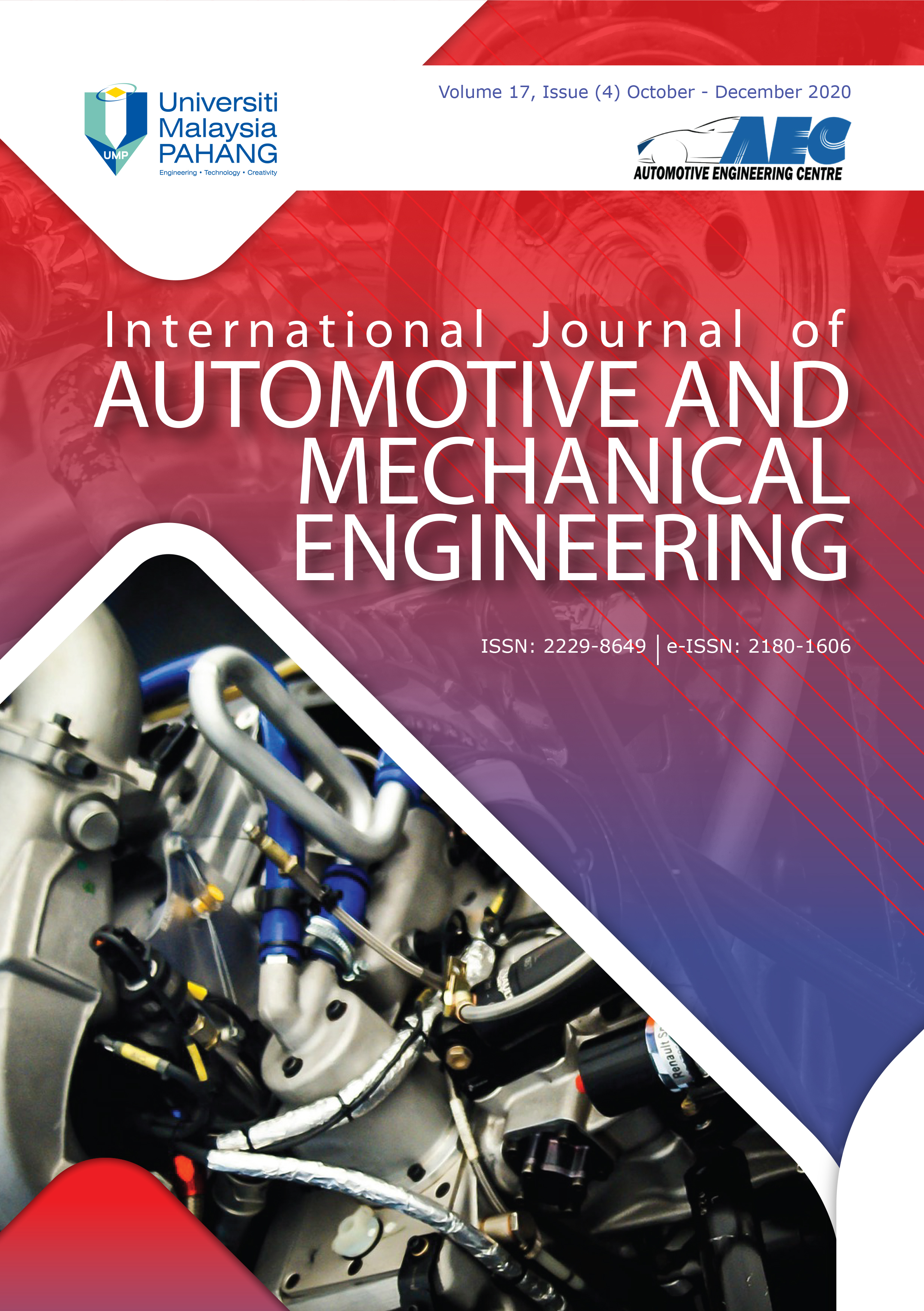Effect of TiO2/MO Nano-lubricant on Energy and Exergy Savings of an Air Conditioner using Blends of R22/R600a
DOI:
https://doi.org/10.15282/ijame.17.4.2020.06.0626Keywords:
Coefficient of performance (COP), Nano lubricant, Exergy destruction, Exergy efficiencyAbstract
This experimental study determines the energetic and exergetic performances of an air conditioner using blend of R22/R600a (60:40 by mass) for different volume fractions (0.1 %, 0.2 %, 0.3 %, and, 0.4 %) of TiO2 nanoparticles dispersed into mineral oil (MO). Energetic and exergetic parameters investigated in this experiment including power consumption, cooling effect, discharge pressure and temperature, coefficient of performance (COP), exergy destruction (irreversibility), irreversibility in the component, sustainability index (SI) and exergy efficiency at different operating conditions. The k-type thermocouples and pressure gauge were used to measure the temperature and pressure at different locations of the air conditioner. Thermodynamic characteristics of the refrigerant were collected using REFPROP 7. Results showed that the lowest power consumption and total exergy destruction were observed in the system with 0.4% volume fraction of TiO2 nanoparticles charge in the TiO2/MO lubricant with refrigerant blend; these values of energy consumption and total exergy destruction were 12.76 % and 7.5 % respectively, which is lower than R22/Polyol ester (POE) lubricant. The COP for the blend was increased by 6.5% to 8.3% compared to R22 and with nano-lubricant COP for the blend was increased by 17.9% to 19.9% compared to R22/POE. The air conditioner using blend charge with 0.4% TiO2/MO lubricant has the maximum COP and exergy efficiency among the selected nano-lubricants. These values of COP and exergy efficiency were 19.9 % and 35.07 % respectively, greater than that of R22/POE. Again, compressor discharge temperature was found to be decreased with the introduction of nano-lubricants compared to the original system, and the expectancy of compressor life may be extended with TiO2/MO nano-lubricant. Among the components, the compressor was found to be maximum exergy destroyer (at 60 %), followed by the condenser (at 25.4 %) and evaporator (at 13.3 %). Overall, the study found that refrigerant blend with nano-lubricant minimised the energy consumption and exergy destruction and the system operated safely with nano-lubricant without any system modification.







